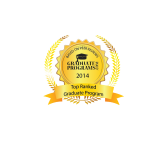
 The study by Dr. Timothy Stasevich (new Assistant Professor in BMB) on the effect of histone acetylation on gene expression was published this week in the journal Nature (Stasevich, et al., 2014, Nature, doi:10.1038/nature13714). The work used live cell fluorescence microscopy to demonstrate that adding an acetyl group to a specific amino acid residue of histone H3 increases the rate at which RNA polymerase II finds its activating partner at the start of the gene and starts building the RNA chain. Histones protein are associated with the packaging of DNA into chromosomes in eukaryotic cells, while RNA polymerase II is the enzyme responsible for transcribing the information from DNA into the RNA message for expression of a specific gene.
The study by Dr. Timothy Stasevich (new Assistant Professor in BMB) on the effect of histone acetylation on gene expression was published this week in the journal Nature (Stasevich, et al., 2014, Nature, doi:10.1038/nature13714). The work used live cell fluorescence microscopy to demonstrate that adding an acetyl group to a specific amino acid residue of histone H3 increases the rate at which RNA polymerase II finds its activating partner at the start of the gene and starts building the RNA chain. Histones protein are associated with the packaging of DNA into chromosomes in eukaryotic cells, while RNA polymerase II is the enzyme responsible for transcribing the information from DNA into the RNA message for expression of a specific gene.


